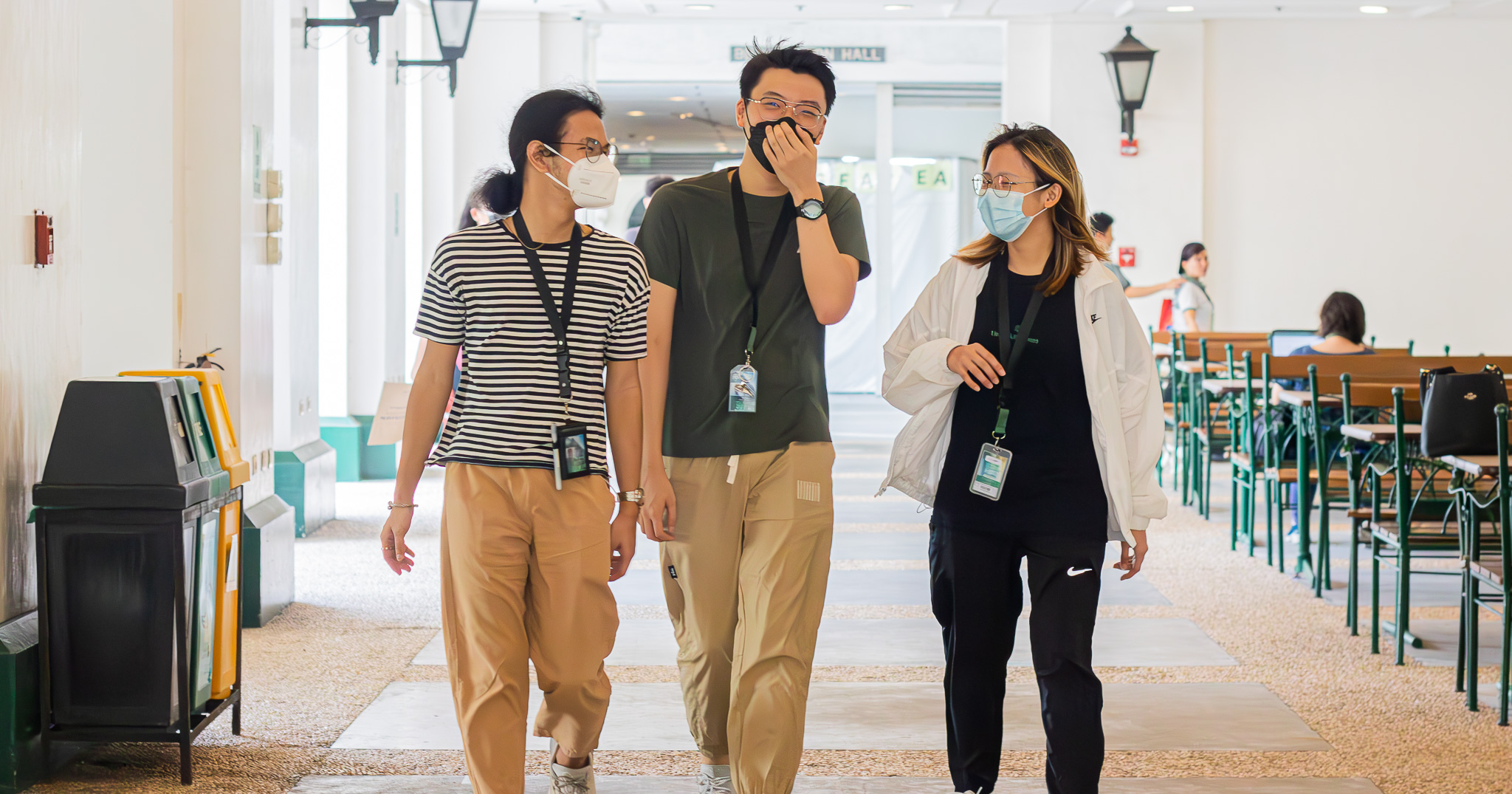
“There is so much more to us than what we wear.”
Associate Provost Dr. Leni D. Garcia declared this in the University Attire Policy Forum held last July 5 at the Br. Andrew Gonzalez Multipurpose Hall, announcing a new “inclusive and equitable” dress code that ends decades of traditional “decent and modest” attire rules.
Both the Manila and Laguna campuses of DLSU attempt to promote inclusivity with the new dress code, granting students the freedom to express their personalities and gender identities while promoting respect and prohibiting offensive attire.
Prioritizing fairness, freedom
Instead of prohibiting length specifications in clothing, the Student Discipline Formation Office will now allow students to sport any clothing style as long as “genitals, buttocks, and nipples, are covered with opaque materials.”
Printed or implied profanities, hate speech, and images that create hostile environments or depict illegal activities are still strictly prohibited. Violators will be charged with a minor offense after four warnings.
Faculty members may still require a dress code for their classes as long as it is relevant to the nature of the course. However, non-compliance with class-specific attire policies will not be reflected as a violation of the Student Handbook and may only be sanctioned within the class itself.
“We want independent decision-makers,” Garcia stated, adding that students should be able to make sound decisions on their own, including how they dress themselves. She added that students must have the autonomy to choose styles that reflect their identities without the fear of being punished.
The University Attire Policy was formed based on the Oregon NOW Model Student Dress Code, which offers leniency by requiring a “minimum safe attire” instead of listing several restrictions. It was also emphasized that the creation of a new dress code considered cultural differences and practicality while confronting sexual objectification, discrimination, stereotypes, and public shaming.
Garcia argued that the “sensibilities of other members of the institution are subjective and therefore unfair” to apply in a widespread policy. She cited the rules of the old dress code and claimed that most restrictions, such as requiring coverups for “revealing” attires, specifically targeted women and are rooted in a sexist and paternalistic mindset.
“To those who identify as males, you are natural harassers. Do you accept that? That’s what the old dress code says,” Garcia stressed.
Department of Theology and Religious Education Associate Professor Dr. Marilou Ibita spoke on using biblical passages and DLSU’s identity as a Catholic institution to undermine the goals of the new dress code. “It pains me when [the Bible] is used as a weapon against the marginalized and certain communities,” Ibita said.
Lasallian Center for Inclusion, Diversity, and Well-being (LCIDWELL) Director Dr. Estesa Xaris Legaspi said she expects the revised attire policy to support the goals of the University’s Safe Spaces Act.
“Sometimes the University is the only space a student will have,” Legaspi expressed. “I am very proud that we are becoming an inclusive academic institution.”
What’s next for inclusivity
In the same forum, Garcia revealed that their office is developing policies for the formal use of lived names within the University.
Recently, AnimoSpace began to accept applications for students to have their display names customized to their lived names. Legaspi said that students have the freedom to choose their identity “to the extent the law allows us to.” Although Garcia highlighted that the official date of implementation is still to be decided, the development is already approved by the Academic Council.
The implementation of inclusive and equitable dress code guidelines, including the recognition of students’ lived names, paves the way for changes anticipated to foster inclusivity and create a supportive environment.

Leave a Reply